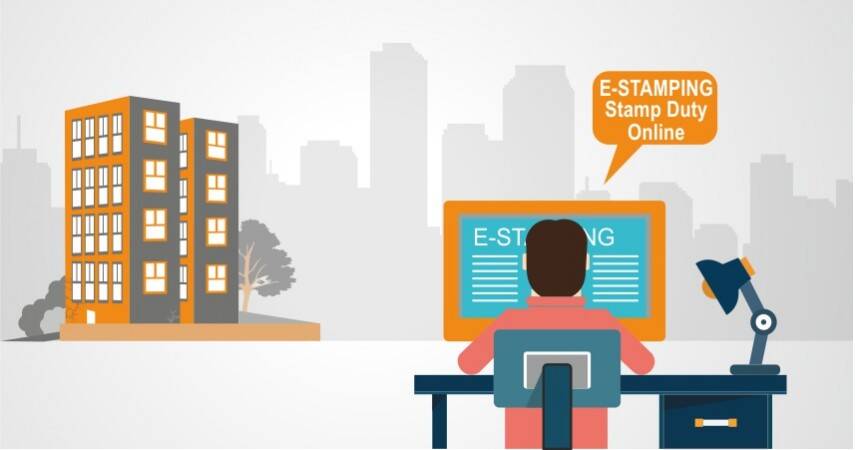There is a total of three ways in which you can pay your stamp duty.
- The first one is the traditional method of using the papers which bear impression stamps and then getting it done at the sub registrar's office.
- The second way is using a franking machine. Herein, a person submits the application in a bank. On a plain paper, the document is printed for which the person is paying the stamp duty and a stamp is also affixed on that paper, which will indicate the stamp duty value. This is a faster method, especially for those want to make the payment in cash or through the demand draft. However, the demerit that lies along is that franking machines are not there in every bank.
- The third way is going for the E-stamping method; here everything is computerised, which helps in making the process super-fast.
The SHCIL (i.e. Stock Holding Corporation of India) is a nodal agency which has the responsibility of implementing and maintaining the records for the e-stamping. This facility is available in a lot of states in India like Delhi, Gujarat, Karnataka, Tamil Nadu, Maharashtra and also Assam. The agency is also in collaboration with numerous banks which are the authorised centres of collection for them.
One can make the payment for a stamp duty in cash or cheque or bank draft or else from NEFT i.e. National electronic fund transfer. Only in a case of cheque and NEFT, the certificate is given after the agency receives the amount of money.
A copy of the e-stamp is provided to the concerned applicant once the payment is realised by the concerned bank.
E-stamping is different because
It has two distinct features which help it to stands out and makes it better than the other methods. One is article number and the other is property description.
In the transaction, the article number is shown for which the person is paying the stamp duty. For property description, writing of the address is necessary. Every e-stamp has a unique identification code that is very critical for the third party verification. One can verify all the details merely by logging in and providing all the details asked.
When it comes to cost
E-stamping is a highly convenient and pocket-friendly technique! There are times when a person ends up buying a higher denomination of the stamp paper in case the exact value is not available. In the case of franking, you can pay the exact amount but there are additional charges and costs which one also has to pay. But when it comes to e-stamping, all one needs to pay is the stamp duty only, there no additional costs.
The only demerit e-stamping is of ‘no duplicate copy’ i.e. in case a person loses the e-stamp, another one cannot be given or issued. Therefore, one is left with no other choice but to make the payment for the stamp duty again.







